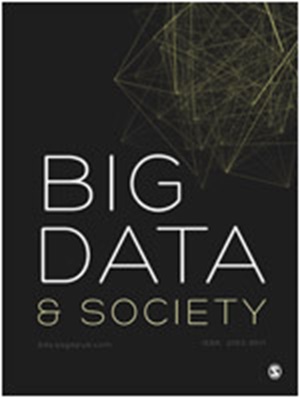The world wide web of carbon: Toward a relational footprinting of information and communications technology's climate impacts
IF 5.9
1区 社会学
Q1 SOCIAL SCIENCES, INTERDISCIPLINARY
引用次数: 6
Abstract
The climate impacts of the information and communications technology sector—and Big Data especially—is a topic of growing public and industry concern, though attempts to quantify its carbon footprint have produced contradictory results. Some studies argue that information and communications technology's global carbon footprint is set to rise dramatically in the coming years, requiring urgent regulation and sectoral degrowth. Others argue that information and communications technology's growth is largely decoupled from its carbon emissions, and so provides valuable climate solutions and a model for other industries. This article assesses these debates, arguing that, due to data frictions and incommensurate study designs, the question is likely to remain irresolvable at the global scale. We present six methodological factors that drive this impasse: fraught access to industry data, bottom-up vs. top-down assessments, system boundaries, geographic averaging, functional units, and energy efficiencies. In response, we propose an alternative approach that reframes the question in spatial and situated terms: A relational footprinting that demarcates particular relationships between elements—geographic, technical, and social—within broader information and communications technology infrastructures. Illustrating this model with one of the global Internet's most overlooked components—subsea telecommunication cables—we propose that information and communications technology futures would be best charted not only in terms of quantified total energy use, but in specifying the geographical and technical parts of the network that are the least carbon-intensive, and which can therefore provide opportunities for both carbon reductions and a renewed infrastructural politics. In parallel to the politics of (de)growth, we must also consider different network forms.全球碳网:信息和通信技术对气候影响的关系足迹
信息和通信技术部门——尤其是大数据——对气候的影响是公众和行业日益关注的话题,尽管量化其碳足迹的尝试产生了矛盾的结果。一些研究认为,信息和通信技术的全球碳足迹在未来几年将急剧上升,需要紧急监管和部门衰退。其他人则认为,信息和通信技术的增长在很大程度上与碳排放脱钩,因此为其他行业提供了有价值的气候解决方案和模式。本文评估了这些争论,认为由于数据摩擦和不可通约的研究设计,这个问题在全球范围内可能仍然无法解决。我们提出了导致这一僵局的六个方法因素:难以获得行业数据、自下而上与自上而下的评估、系统边界、地理平均值、功能单元和能源效率。作为回应,我们提出了一种替代方法,从空间和位置的角度重新定义这个问题:一种关系足迹,在更广泛的信息和通信技术基础设施中划分地理、技术和社会元素之间的特定关系。用全球互联网最被忽视的组成部分之一——海底电信电缆来说明这个模型,我们提出,信息和通信技术的未来不仅可以从量化的总能源使用角度来绘制,还可以从指定网络中碳密集度最低的地理和技术部分来绘制,因此,它可以为碳减排和重新启动基础设施政治提供机会。在发展政治的同时,我们还必须考虑不同的网络形式。
本文章由计算机程序翻译,如有差异,请以英文原文为准。
求助全文
约1分钟内获得全文
求助全文
来源期刊

Big Data & Society
SOCIAL SCIENCES, INTERDISCIPLINARY-
CiteScore
10.90
自引率
10.60%
发文量
59
审稿时长
11 weeks
期刊介绍:
Big Data & Society (BD&S) is an open access, peer-reviewed scholarly journal that publishes interdisciplinary work principally in the social sciences, humanities, and computing and their intersections with the arts and natural sciences. The journal focuses on the implications of Big Data for societies and aims to connect debates about Big Data practices and their effects on various sectors such as academia, social life, industry, business, and government.
BD&S considers Big Data as an emerging field of practices, not solely defined by but generative of unique data qualities such as high volume, granularity, data linking, and mining. The journal pays attention to digital content generated both online and offline, encompassing social media, search engines, closed networks (e.g., commercial or government transactions), and open networks like digital archives, open government, and crowdsourced data. Rather than providing a fixed definition of Big Data, BD&S encourages interdisciplinary inquiries, debates, and studies on various topics and themes related to Big Data practices.
BD&S seeks contributions that analyze Big Data practices, involve empirical engagements and experiments with innovative methods, and reflect on the consequences of these practices for the representation, realization, and governance of societies. As a digital-only journal, BD&S's platform can accommodate multimedia formats such as complex images, dynamic visualizations, videos, and audio content. The contents of the journal encompass peer-reviewed research articles, colloquia, bookcasts, think pieces, state-of-the-art methods, and work by early career researchers.
 求助内容:
求助内容: 应助结果提醒方式:
应助结果提醒方式:


